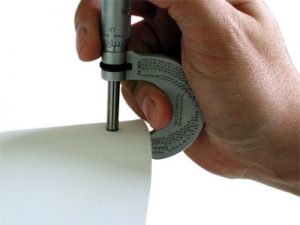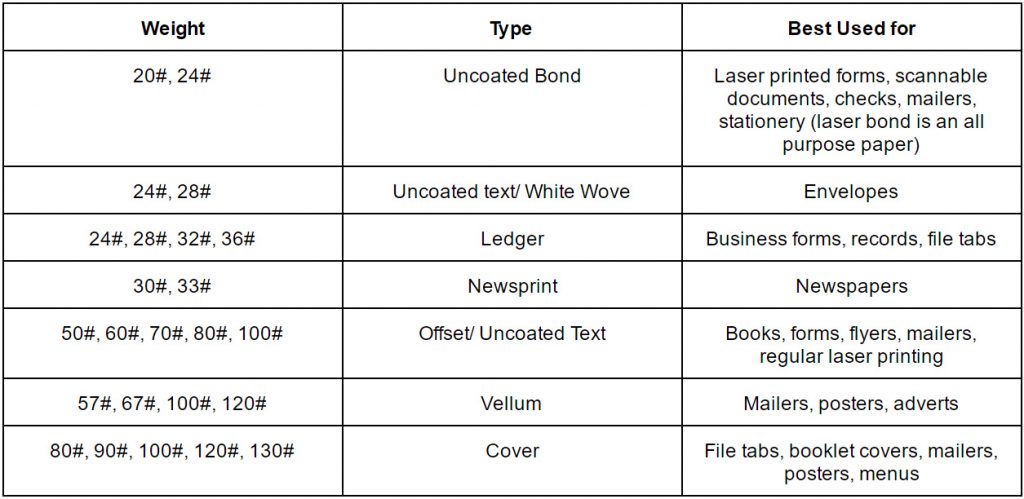
Like a normal person, you probably don't think about paper stock until it comes time to print. Printing your work on the right paper is essential to expressing your message to your audience. There are so many options and varieties of stock that it can be overwhelming to find the perfect fit. We’ve made it easier for you to narrow down your choices with charts!
First, let’s break it down into the two main types of paper: Coated and Uncoated.
Surface coating reduces ink absorbency and gives your stock a smooth appearance. This helps define details in images and improve color density. Images look brighter and more polished. Typography is crisper and easier to read on coated stock which makes it popular for printing catalogs, brochures, flyers, and newsletters.
The most common types of coated stock are gloss, matte, and satin (also called dull). Gloss papers usually have a higher sheen to them, like magazines, while matte paper is smooth and flat with little to no shine on the stock. A dull or satin paper is right in the middle with a low gloss finish. Some special coatings, like Soft Touch coating, will make your piece unforgettable. With Soft Touch, clients won’t ever lose your business card or customer appreciation mailer -- they’ll be too busy rubbing it on their faces because it’s that soft!

Uncoated or “offset” stock has no coating or pigment so it has an non-reflective appearance and absorbs more ink. It has a rougher feel to it than coated stocks. Because of its higher absorbency, it is better used for printing text rather than images. Many types of letterhead, correspondence envelopes, business cards, pamphlets, and brochures are printed on uncoated stocks. Common uncoated finishes are vellum, wove, bond, and ledger.

The weight of the stock helps distinguish your projects from the rest. Many flyers and brochures are printed on text weight stock, while business cards or book covers are printed on a heavier card/cover stock.
Different paper stocks are classified by their weight and thickness. The poundage of a certain stock is determined by the weight of a ream (500 sheets) after it has been cut to standard size. For instance, if a ream of 25” x 38” of offset grade stock weighs 70 lbs, we would call it 70# offset. The thickness of paper (caliper) is measured to the thousandth of an inch using a micrometer.
So there’s your preliminary account of the more commonly used stock.
You can also reach out to us at [email protected] and someone from our team will be more than happy to assist you!
Post Written by Angela Creed
Charts by Angela Creed, Photo by Virtual Machine Shop
© Manhattan Digital Direct
